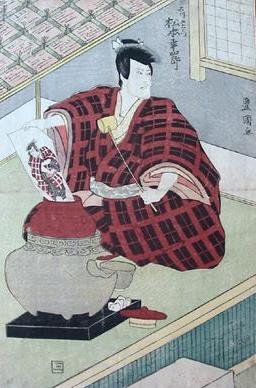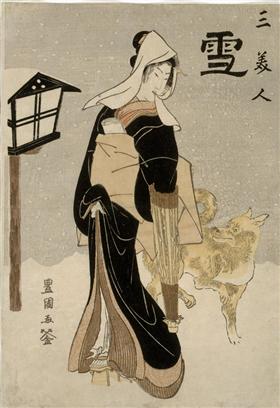Art of Japan and Utagawa Toyokuni: The modest artist
Lee Jay Walker
Modern Tokyo Times

The Japanese artist, Utagawa Toyokuni, was born in 1769 during the Edo Period and died in 1825. Toyokuni was extremely modest. This concerns his artistic ability – in comparison with riskier artists.
Toyokuni famously said, “My pictures – they are merely something that I draw, and nothing more than that!”
In truth, the commercial angle held Toyokuni back. Thus he avoided more challenging art and focused on what the general public bought. Therefore, his amazing ability in depicting the Kabuki scene entails that Toyokuni had the ability to be more expansive – concerning the countless themes that embody the world of ukiyo-e in Japan – if he had chosen a different artistic path.

The British Museum says, “The artist who led the Utagawa School, the most prolific and influential school of the late Edo period, Toyokuni rose to prominence in ‘Ukiyo-e’ circles with the success of his ‘Portraits of Actors on Stage’ series, issued from 1794 onwards. His elegantly flowing line and cheerful color schemes produced a lively and vivid sense of realism which established the direction for subsequent developments in actor portraiture.”
Ironically, while Sharaku is lauded among Western art lovers of ukiyo-e, Toyokuni was praised internally during his lifetime for being more realistic. Hence, the longevity of Toyokuni is testimony to people seeking a more honest appraisal of the actors being depicted through the medium of art.

The Ota Memorial Museum of Art says, “Toyokuni became a star artist in the genre of yakusha-e which portrayed Kabuki actors in Edo. His representative series of yakusha-e, “Kabuki Actors on the Stage,” published in 1749 attracted people with its refreshingly honest depictions of actors. In May of the same year, Tōshūsai Sharaku debuted with 28 bust portraits of actors made luxuriously with mica and published by Tsutaya Jūzaburō. This launched the rivalry between Toyokuni, Sharaku and Shun’ei, who were already big names in this genre. However, public interest toward Sharaku did not last long and he disappeared after about 10 months. Shun’ei, too, stopped making yakusha-e within a few years. Toyokuni, who gained both popularity and ability, became the leading artist of yakusha-e and pursued his own unique expression.”

PLEASE SUPPORT MODERN TOKYO TIMES by DONATING
Modern Tokyo News is part of the Modern Tokyo Times group
DONATIONS to SUPPORT MODERN TOKYO TIMES – please pay PayPal and DONATE to sawakoart@gmail.com
http://moderntokyotimes.com Modern Tokyo Times – International News and Japan News
http://sawakoart.com – Sawako Utsumi personal website and Modern Tokyo Times artist
https://moderntokyonews.com Modern Tokyo News – Tokyo News and International News
PLEASE JOIN ON TWITTER
https://twitter.com/MTT_News Modern Tokyo Times